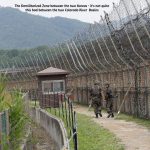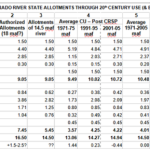
If any drink [of the Hassayampa], they can no more see fact as naked fact,
but all radiant with the color of romance.– Mary Austin
Before getting into the Colorado River again, I want to put out a plea: Please recognize the importance of the coming ‘midterm elections.’ Especially if you live in one of 15 percent of our congressional districts that has not been gerrymandered to a foregone outcome. This is a ‘tipping point’ election, not between two political parties trying to work things out, but between two political concepts with no middle room for compromise: if both houses of Congress tip toward the Republicans this election, rather than remaining barely tipped toward the Democrats, then we are going to be taking a big bumbling step toward authoritarian governance, and away from our evolving American experiment in government by, for and of the people. I think I’m probably preaching to the choir here, but please do what you can to encourage friends to register (especially women, students with debt, seniors on Social Security), and help at the polls – be a poll watcher to counter the armed army of watchers the Trumpistas talk about having out there to make sure only the right kind of people get to vote.
Meanwhile back on (or near) the Colorado River, in 1922, commissioners from the seven basin states were attempting to develop an interstate compact for sharing the river’s waters rather than trying to outrun each other in appropriating it. Not an easy assignment – last post, we looked at the failed efforts of the Compact Commissioners to effect a seven-way division for the consumptive use of the river among themselves on the basis of anticipated development (mainly agriculture). Frustrated and disappointed, they were on the verge of abandoning the effort, but Nevada Commissioner James Scrugham and Chairman Hoover refocused them, reminding them that their charge was not to get stuck in a technical analysis of unknowable details about their futures, but just to ‘to formulate a broad constructive policy for development’ of the river.
In March and early April of 1922 they held hearings throughout the Southwest – mostly, as usual, outside the river’s natural basin – and during that time they passed around an idea that had originated with Commissioner Delph Carpenter of Colorado. This was a bold-stroke division of the river basin and its surface waters into two subbasins: an Upper Basin above the river’s Colorado Plateau canyons consisting of the four states (mostly) above the canyons, New Mexico, Colorado, Wyoming and Utah; and a Lower Basin below the canyons consisting of the other three states, California, Arizona and Nevada.
Each basin would get to develop half of the river’s waters in their own good time, with further divisions by states in each basin being determined whenever it seemed appropriate as the directions of development evolved. This was indeed a broad constructive policy for development.
This two-basin division was the idea they began discussing almost immediately when they retreated to Bishop’s Lodge near Santa Fe in November 1922, determined to work until they had a workable compact to present to their states. Even though it was a disarmingly simple idea, it took them 17 meetings over 11 days to work it out to – well, to most participants’ satisfaction.
How do we today consider, evaluate something like the Colorado River Compact? They were working in the beginning era of the Anthropocene epoch, enthusiastically employing new technologies and organizational systems to harness and rationalize nature – what we might call the Naive Anthropocene. We are living in a much less naive era of the Anthropocene, where much of our attention has to be directed to dealing with the consequences of the Naive Anthropocene, and we no longer seem to have a unified national will for the work of rationalizing nature – even within our individual hearts and minds.
A place to start a consideration of the Compact might be to consider its authors’ own goals, as set forth in the first article of the Compact, and how well they have been followed and adhered to through the century for which the Compact has been a guidestar. (The Compact text is easily obtained by just putting ‘Colorado River Compact’ in your browser.)
Article I of the Compact recites five main purposes: ‘to provide for the equitable division and apportionment of the use of the waters of the Colorado River System; to establish the relative importance of different beneficial uses of water; to promote interstate comity; to remove causes of present and future controversies; and to secure the expeditious agricultural and industrial development of the Colorado River Basin, the storage of its waters, and the protection of life and property from floods.’
I want to look here at the Compact Commissioners first and last purposes. Of the five, only the last purpose – ‘to secure the expeditious agricultural and industrial development of the Colorado River Basin’ – can be considered fully realized; this was, after all, the purpose of the Compact, the ‘broad constructive policy for development.’
And it worked: the Compact ratification process was neither easy nor simple, and Arizona refused to ratify it until 1944. But Congress was accommodating, and within a decade of the Compact drafting, a great dam in the Black Canyon on the Arizona-Nevada border was under construction to control and store the river’s water; the Imperial Weir Dam and All-American Canal to carry water to the Imperial Valley were underway downstream; and the many towns and cities making up the Los Angeles-San Diego corridor were pooling resources as the Metropolitan Water District to build a 250-mile aqueduct from the river – regional development on a unprecedented scale, and all operational by the World War II boom. This was that ‘broad constructive policy for development’ the Compact Commissioners had sought to create.
Construction to control and rationalize the natural river continued in both Basins for the first half of the ‘Compact century’; but after 1970 new construction began to be balanced and then supplanted by efforts to deal with the environmental and socioeconomic consequences of ‘expeditious agricultural and industrial development.’ That is where we are today: the development of the river’s water for human purposes is essentially done; now we are dealing with the consequences of rapid development in order to keep the system operational. Less fun, to be sure, and probably better when taken into consideration before the rapid development. But we seem often to make ‘the naked facts’ and ‘the radiant color of romance’ an either-or choice.
The first purpose stated – ‘to provide for the equitable division and apportionment of the use of the waters’ – is the content of Article III of the Compact, and the Commissioners can only be said to have succeeded in this in a messy way.
Their obvious intent, expressed in the meetings, was to give each Basin half of the river’s water to develop, with a responsibility for each to supply half of whatever was eventually apportioned to Mexico if surplus flows were insufficient to cover that.
From the perspective of most of the Commissioners, that would have been a sufficient ‘division and apportionment’ for the Compact’s purpose. Lees Ferry had been selected as the division point in the canyon region – being one of the few places accessible without a strenuous hike – but there was no measuring station there yet; the only measure of the river’s flow was a 20-year record from a gauge near Yuma. Better, they thought, to avoid specific apportionments between Basins until they had a better sense of the river’s flow.
California, however, insisted that ‘half the river’s water’ be given a specific number; they assumed they were close to whatever their specific apportionment would be, and did not want to go over that. So the Commissioners set about trying to determine a reasonable ‘maximum’ for division and apportionment. They have been most criticized for their decision in this part of the Compact creation, maybe a little unfairly.
They had advice from the Bureau of Reclamation engineers, specifically Reclamation Commissioner Arthur Powell Davis, a nephew of John Wesley Powell and a regular attendee at the Compact meetings, and from Geological Survey scientists, specifically E.C. LaRue – like Major Powell, possessed of an engineering mind that grounded itself in science. Bureau estimates of the river’s average flow, calculated mostly from Yuma data, was around 16.5 million acre-feet (maf). LaRue and his colleagues worked with some of the same data but included both more awareness of evaporation in the desert and more cultural memory back into the 19th century in their estimates, and came up with an average annual usable flow closer to 13.5 maf.
Because it was the 1920s, the beginning of the Anthropocene with the Industrial Revolution producing the equipage for previously unimaginable feats, the Commissioners wanted to go with the ever-optimistic Bureau’s numbers. But calculations using the ten worst years in the Yuma record showed that the 16.5 number would not work dependably. They finally settled on 15 million acre-feet as the compromise between the engineers’ can-do optimism and the geo-scientists pessimism about the river in the desert. At the time, there was a sincere belief (tinged with the colors of romance) that by the time all the water in the river was developed, the Bureau would have the technology and resources to bring in water from some larger river with water to spare.
Within a couple decades of the Compact’s signing – near the end of an unusually wet spell in the Colorado Basin – it was obvious that giving each Basin half of 15 maf, or 7.5 maf each, was more than the river could be depended on to deliver – a situation complicated by the State Department’s apportionment in a wartime treaty of 1.5 maf to Mexico, twice what the Compact Commissioners had anticipated.
So they had screwed up. But possibly more is made of this than the error warrants. Their error did not cause the current over-appropriation of the river, or the potential crash of the reservoir system. What caused that has been a general blithe disregard for the flow numbers for most of the past century by nearly everyone. Are we to believe that, if the Compact had given each Basin 6.5 maf rather than 7.5 maf per year to develop, there would have been fewer subdivisions sprawling out across the desert from ‘Sunbelt’ cities whose economies are predicated on growth, and less irrigated acreage to feed the people (not to mention the horses of Saudi Arabia)? Recently several states have mandated – with varying success ratios – that all new developments be able to demonstrate rights to a hundred-year water supply. But some desert states (hello Arizona) have no state control like that on development. This overuse of the river’s water would probably have happened, whatever number had been in the Compact; no one had been given a big stick to enforce good sense
The matter of ‘equitable division and apportionment’ deserves a moment’s attention. By the end of World War II, when the Upper Basin states sat down to create their own Compact to divvy up their share of the river, it was obvious that there would almost certainly not be a dependable 7.5 maf of water for them; yet, as they interpreted it, the whole-river Compact directed them to send 7.5 maf a year past Lees Ferry to the Lower Basin. So they assigned to each state a percentage of the water ‘left over’ for them, after that obligation was met, rather than a firm amount – an unusual acknowledgement of the ‘naked facts’ of the matter.
Today, the Lower Basin has been regularly using considerably more water than their 7.5 maf, and the Upper Basin considerably less. The Lower Basin’s overuse was predicated, for most of the century, on ‘unused Upper Basin water.’ Since roughly the turn of the century, however, that slack has been taken up by Upper Basin use, but the Lower Basin has kind of pretended to not notice that. Or the fact that there is no more ‘surplus water’ to cover their half of the Mexican obligation – or for that matter the million acre-feet of evaporation from their reservoirs. The supply cuts the Bureau is imposing on Arizona, and will soon be imposing on California, are just to get them down to their Compact apportionment.
When or if that is actually achieved, the use of the river will be about two-thirds to the ‘desert river’ – the Lower Basin plus Mexico – and one third to the ‘mountain rivers’ of the Upper Basin. That will not be ‘equal,’ but it might be ‘equitable’ – fair, reasonable and just. The irrigated lands of the desert river can produce two or three times what the mountain lands can produce, and the towns and cities of the Upper Basin are more humanly scaled.
Now everyone everywhere – not just in the Colorado Basin – needs to stop growing. We’ve possibly reached the tipping point where, if you’re growing, you’re dying and taking the planet with you.
I expect to catch hell for saying that. But next time – still considering the Compact: what happens when you divide a river in two?




Fascinating; thanks.
Paula
I like the Hoover Dam photo, too.
PK
George, of course you are going to “catch hell for saying it” but we (you and I and many others) have been saying it for years. Problem is how are we ever going to stop people from coming!
Look at the city of Boulder for instance. Since they started their “no or very slow growth” 20 years ago, all it has done is to raise the value of the homes and businesses to the point where only the very rich can live there. Same in CB. To a lesser extent, same in Denver. When the availability of homes is less than the demand for them the prices just go up, completely changing the demographics of the people who live there.
A great read, Man! You are able bend my mind around problems and see them for exactly what they are like few can. Now, I’ll be looking forward to your next “Sibley’s Rivers” for a way out of this mess we’re in.
Offered without comment:
There are more than 200 golf courses in Greater Phoenix; more than 300 in Arizona.
Civilization marches on.
Interesting comment “if you’re growing…etc.”. Not sure if I agree. Not sure if I don’t. It’s one of those Sibleyisms that require more thought. Thanx George!